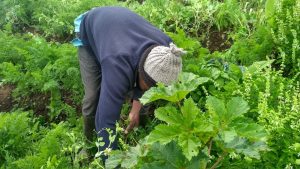Introduction
In the face of escalating climate change concerns, sustainable farming practices have emerged as a vital solution to mitigate greenhouse gas (GHG) emissions. As agriculture contributes significantly to global emissions, adopting sustainable farming methods can play a pivotal role in reducing the environmental impact of food production while ensuring long-term food security. This article explores the various sustainable farming practices that farmers can implement to curb GHG emissions and foster a more sustainable future.
Precision Agriculture and Efficient Resource Management
Precision agriculture techniques employ advanced technologies to optimize resource allocation, minimize waste, and increase productivity. By leveraging tools such as GPS, remote sensing, and data analytics, farmers can precisely measure and manage inputs such as water, fertilizers, and pesticides. This approach reduces over-application of inputs, resulting in decreased emissions associated with their production, application, and runoff.
Conservation Tillage and Soil Management
Traditional tillage practices can accelerate the release of carbon dioxide (CO2) from the soil into the atmosphere. Conservation tillage, on the other hand, involves minimal soil disturbance, leaving crop residues on the field. This technique helps improve soil health, reduce erosion, and sequester carbon. Implementing cover crops and practicing crop rotation further enhances soil fertility, water retention, and carbon sequestration potential.
Agroforestry and Silvopasture
Agroforestry integrates trees into farming systems, providing numerous environmental benefits. Trees sequester carbon dioxide, reduce soil erosion, and improve water quality. They also provide shade, windbreaks, and habitats for beneficial biodiversity. Silvopasture, a practice combining trees, forage crops, and livestock, not only sequesters carbon but also provides shade for animals, reducing their heat stress and, consequently, methane emissions.
Livestock Management
Livestock farming contributes significantly to GHG emissions, primarily through methane released from enteric fermentation and manure management. Sustainable livestock management practices include improved feeding techniques, such as balanced diets and feed additives, which can reduce methane emissions. Additionally, implementing anaerobic digesters for manure management can capture methane for energy production, mitigating emissions and promoting renewable energy sources.
Renewable Energy Integration
The adoption of renewable energy sources on farms can offset fossil fuel consumption and associated GHG emissions. Solar panels, wind turbines, and biogas digesters can generate electricity, heat, and fuel for on-farm operations, reducing reliance on non-renewable energy sources. These investments in clean energy not only minimize emissions but also provide economic benefits through energy cost savings and potential revenue from excess power generation.
Water Conservation and Efficient Irrigation
Water scarcity is a pressing concern in many agricultural regions. Sustainable farming practices prioritize water conservation and efficient irrigation methods. Technologies such as drip irrigation, precision sprinklers, and soil moisture sensors minimize water wastage, energy use, and associated GHG emissions. Proper management of irrigation systems also prevents soil salinization and contamination of water bodies.
Conclusion
The adoption of sustainable farming practices is crucial for reducing greenhouse gas emissions from agricultural activities. By implementing precision agriculture, conservation tillage, agroforestry, sustainable livestock management, renewable energy integration, and efficient irrigation, farmers can minimize their environmental impact while ensuring sustainable food production. Policymakers, agricultural organizations, and consumers must support and incentivize these practices to accelerate their adoption globally. Embracing sustainable farming is not only essential for combating climate change but also for safeguarding the future of our planet and ensuring food security for generations to come.


